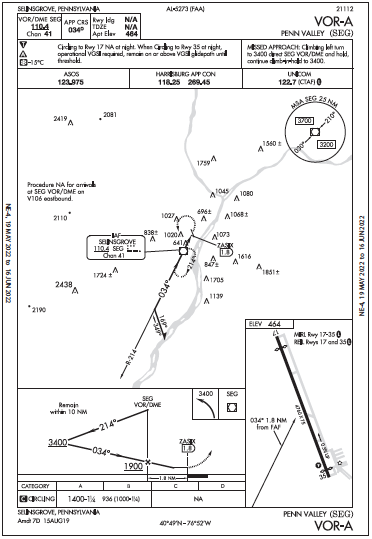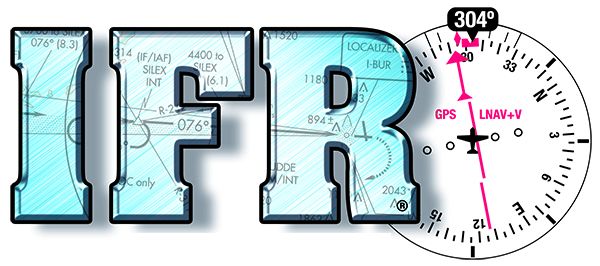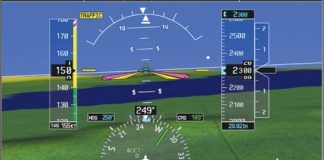Just Cancel
As a retired Center controller with significant airport control experience, I cringe every time I hear the following on ATC frequencies at non-towered airports, ATC: “Report airport in sight for visual approach.” Pilot: “Airport in sight.” ATC: “Cleared visual approach to (XXX) airport. No traffic observed between you and the airport. Change to advisory frequency approved. Report cancellation of IFR this frequency or down time with (XXX) FSS (or by telephone).” Pilot: “Cancel IFR.”
What a significant waste of valuable frequency space! Visual approaches to non-towered airports are the (unofficial) estimated norm 80 percent of the time. If a pilot is going to cancel anyway upon being issued the approach clearance, why not just cancel in the first place? What possible benefit is there to making the controller say all the extra required verbiage? There are exceptions, of course, one being potential traffic to be issued, but then it is unlikely the controller will release you from the frequency prior to resolution. There may be other reasons to avoid simply cancelling IFR, but I can’t think of any offhand.
I have often cancelled IFR even without having the airport in sight, simply because it is time to switch my focus (and frequency) to the VFR arrival procedures and CTAF, or there are no other services that ATC can afford me as I approach my destination. My hope is that pilots reconsider how they handle non-towered visual approach communications in their future operations.
Kent Nicholson
Batavia, Illinois
You make a good point, Kent. My guess is that the pilots in your example—which includes me from time to time—just don’t think to cancel until reminded to do so. Or, perhaps other pilots just want the warm embrace of ATC all the way in. Regardless, your suggestion is valid and I’ll take it and hope that our readers will as well.
But, along those lines I just had something similar happen. My home ’drome has a tower. I arrived on my instrument clearance for the visual and was cleared to land just before Tower closed for the night. While I was on short final, I heard the “Tower is now closed” broadcast and received no direct communication from Tower beyond previously getting the clearance to land.
I was expecting that and didn’t think anything of it. I landed and taxied to my hangar normally. I often forget to take my phone off airplane mode until long after leaving the airport. Fortunately, this evening I did so just as I put the plane in the hangar. I almost immediately got a call from a local number that I didn’t recognize. I answered and it was Center asking if I was okay.
Before shutting down, the Tower controller had not given Center status on me, nor had he given me any cancellation instructions. My mindset was that I was landing at a towered field where I didn’t have to cancel, just as I had done hundreds of times before. But, clearly this was a different circumstance where I should have explicitly cancelled.
I had a pleasant, brief conversation with the controller, the bottom line of which was, “No harm, no foul.”
This adds to your recommendation the suggestion that when saying you’ve got the airport in sight and expecting a visual, it can be useful and beneficial to cancel in the same transmission. Of course, there’s always the caveat that if you’ve just punched through a layer, you can’t cancel until you’re in VMC.
Thanks for the note, Kent.
“A” at Night
In “NA At Night” by Mark Kolber back in June 2021, the “Can I Use Runway 6 Anyway?” section should be revised. You’ve taken §91.175(a) out of context. That reg is for “Landing under IFR;” if you cancel on approach before landing, you’re not IFR and the section doesn’t apply to you.
Mike Cardosa
Waunakee, Wisconsin
The section is correct as written.
While you’re correct in that once you’re under VFR, the approach restrictions don’t apply and §91.175 is irrelevant. But in the stated scenario, you’ve got to fly the approach through IMC to get to VMC. The approach is not authorized at night, thus you can’t legally begin the approach, even if your expected result isn’t a landing, but is to cancel once reaching VMC.
More IFR vs. VFR Right of Way
I appreciated your thoughts to Mr. Thompson in the May 2022 Readback when he queried your “bottomless depth of knowledge.” His scenario is common place still in Northern Colorado (and I’m sure many other fields).
Having been a champion of AC 90-66b for years especially when teaching my CFI classes, I was surprised you didn’t pull that rabbit out of your magic hat. It adds even more punch to the AIM.
My friend, Larry, who just retired as the Operations Supervisor at KFNL would intercede and throw that advisory circular at pilots who verbally assaulted us uneducated training operations pilots after we supposedly cut them off as they made their non-standard right-base entry into the standard left-traffic pattern we were flying.
I hope you stay healthy and on top of your game while at IFR for years to come. After all we need your “bottomless depth of knowledge,” and I mean that sincerely and respectfully.
Jay Turnbull
Loveland, Colorado
I didn’t reference the AC simply because I didn’t think doing so added anything.
And thanks for your compliment. As for “years to come” the only time I consider quitting is when I’m behind at deadline (most every month).
Altimeter Errors
In the May Readback, I was surprised with the recommendation to Kirsten Newberry to “go fly” VFR or to “consider launching” IFR.
I’ve always considered an altimeter error of 75 feet to be a hard limit. The regs (§ 91.205) tell us we need an altimeter, and §91.411 says we need a successful test within 24 months, with a tolerance of 75 feet. Furthermore AIM 7-2-3.a.(3) says: “If the difference from the known field elevation and the altitude read from the altimeter is plus or minus 75 feet or greater, the accuracy of the altimeter is questionable…”
Roger Harris
Stockton, New Jersey
The question was about agreement between two altimeters, not accuracy of a single altimeter. Of course, if an altimeter is further than 75 feet from field elevation, you shouldn’t embark on an instrument flight. However, in the extreme, with two, one could be 75 feet high and the other 75 feet low. They could thus be 150 feet apart. The question, and the answer, dealt with the acceptable difference between those two altimeters.
Also, §91.411 applies only to IFR flight and has no restriction on VFR flight. Thus, the “go fly” recommendation if VFR.
Something’s Missing
The Penn Valley KSEG VOR-A into Selinsgrove, Pennsylvania, appears not to require DME. I randomly gave this approach to a student the other day for a simulator exercise. While he and I were briefing it, I asked him to do it without GPS. There was no DME in the sim. So I looked for the Time and Speed Table to determine the FAF to MAP time. It wasn’t to be found! Okay … I looked again for a note about “DME Required.” Didn’t find that either. Trying to figure out how to do this approach with a single VOR receiver, I was stumped!
Larry R. Jarkey
Middletown, Maryland

(Larry and I had a nice e-mail dialog where we speculated on whether this was really a VOR/DME approach or if the speed-time table was missing. I reached out to our TERPSter and he agreed that something was missing and suggested I check the NOTAMs. Sure ’nuff, there’s speed-time information in a NOTAM. Moral of the story is when an approach doesn’t seem right—and even if it does—always check the NOTAMs.





